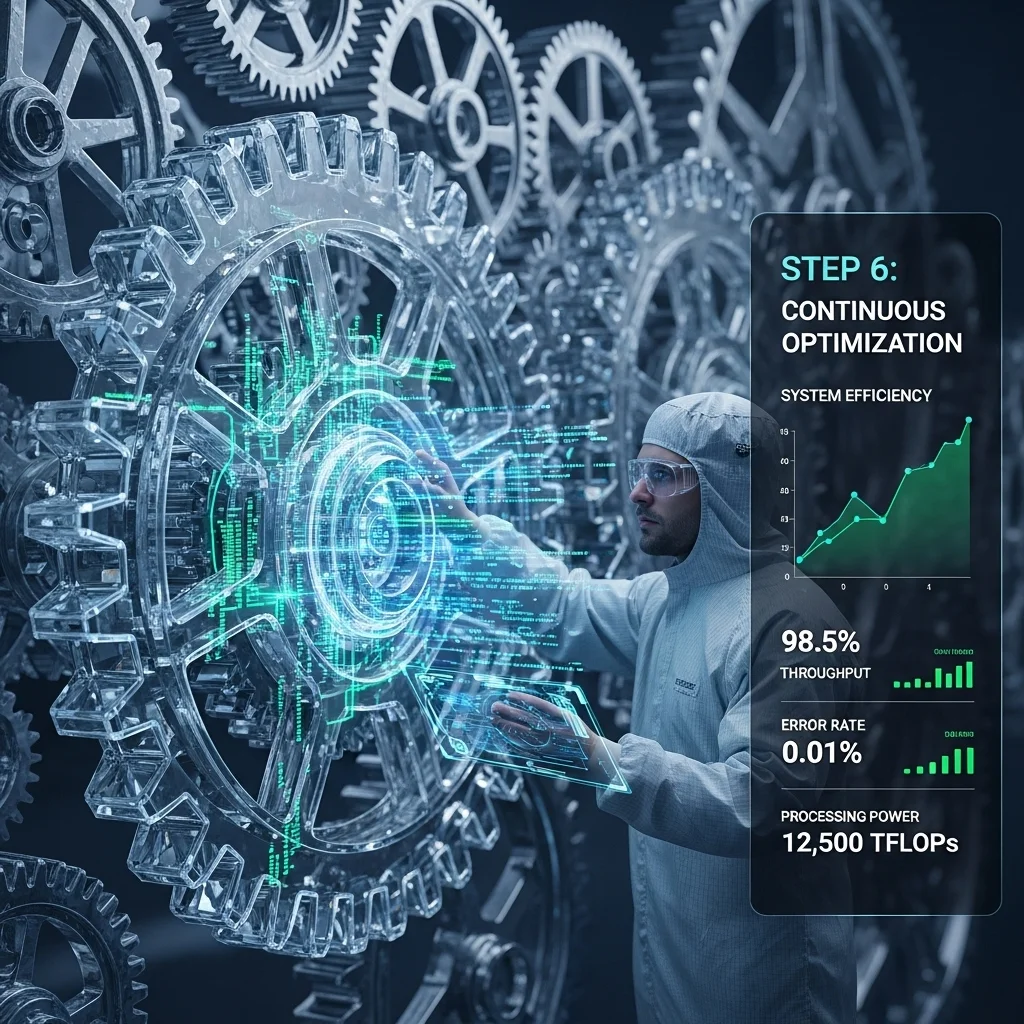The benefits of AI in customer service
How artificial intelligence transforms the customer experience
Efficiency
AI can automate tasks, allowing staff to focus on more complex customer queries.
Speed
Responses are generated at lightning speed, reducing reply times.
Personalisation
AI learns from interactions and offers personalised experiences for customers.
Consistency
Response quality remains consistently high, free from human error.

In the ever-changing world of customer service
In today’s dynamic customer-service landscape, businesses face the challenge of keeping customer communication not only fast but also effective. Picture a busy coffee shop—if the barista isn’t quick enough, customers become frustrated and go elsewhere. The digital world is no different; customers expect immediate answers to their questions.
The role of AI in customer communication
AI can dramatically enhance the first line of customer service by automatically generating answers to frequently asked questions and prioritising emails. This not only reduces workload but also boosts customer satisfaction, freeing agents to handle the more complex queries that aren’t so easily automated.
Benefits
Time savings: Avoid sifting through hundreds of emails manually.
Cost reduction: Operational costs decrease over time.
Improved experience: Customers receive help faster, leading to higher satisfaction.
Disadvantages
Lack of human touch: Some customers prefer human interaction.
Dependence on technology: What happens if the systems fail?
How to develop an AI email service desk.
The process boils down to a few key stages, as this is a comprehensive undertaking that requires careful planning.

Phase 1: Research and Planning.
Start by analysing your current customer-service processes—this is the first step towards effective AI implementation. What are the most common questions? By examining these, you lay the foundation for your AI system.

Phase 2: Technology Selection.
Once you have identified your needs, choose a technology provider. The solution must integrate seamlessly with your existing systems, but also offer the scalability required for future growth.

Phase 3: Training AI Systems.
Now for the fun part: training your AI! Use historical data to learn from past customer interactions. The AI can then understand and answer questions based on previous conversations.

Phase 4: Testing and Feedback.
Before you go live, testing is essential. Many companies move too quickly and overlook critical errors. Gather feedback from your team and fine-tune the AI where necessary.

Phase 5: Rollout.
When everything is ready, roll out the AI email service. This can be a gradual transition from manual to automated processes.

Phase 6: Continuous Optimisation.
No AI system is ever finished. Keep monitoring performance and optimise whenever possible. Ongoing updates and new training ensure the AI remains effective.


Ready to take the leap?
Developing an AI email service desk is exciting but also a serious commitment. We invite you to work with us on this transition. Let’s explore how we can enhance your customer service with AI! Contact us for a no-obligation consultation.

The future of customer service with AI
Why AI is becoming the standard in customer service
In the future, AI will be indispensable in every customer interaction. Customer service will no longer be purely reactive but proactive, enabling companies to anticipate customer needs before they even arise—leading to a far more satisfying experience.
AI and Machine Learning
Machine learning lies at the heart of this revolution. By analysing patterns in customer behaviour, AI can anticipate common questions and automatically respond to them.
Implementation and Adoption
When implementing AI in customer service, adoption is key—both among staff and customers. Some customers may be sceptical, so change management plays a crucial role. If your team is well prepared to work with AI, acceptance will be much smoother.

Pros and cons of an AI email service desk
What you need to know before investing
Benefits
Scalability: As your company grows, the AI can scale without hiring additional staff.
24/7 Availability: AI-powered customer service is always on, even outside office hours.
Data analysis: AI can process vast amounts of data and provide valuable insights.
Disadvantages
Technical issues: Technology can fail, leading to customer frustration.
Less personal approach: Not every customer responds well to automated interactions.

Successful strategies for AI implementation
How to minimise the risk of failure
Start small
Begin with a limited set of features and expand gradually—this prevents overwhelm and allows for controlled growth.
Provide training
The AI needs training, but so do your employees. Workshops and training sessions help staff use the system effectively.
Involve your customers
Let customers know you are implementing AI. This demonstrates your commitment to their experience and encourages them to provide feedback.
🤖 What are the main advantages of an AI email service desk?
The key advantages are efficiency, speed and personalised customer communication. AI can also analyse large volumes of data and deliver valuable insights you can use to improve your service. 😊
📈 How can I measure the effectiveness of my AI email service desk?
Track metrics such as response time, customer-satisfaction scores and the number of emails resolved automatically without human intervention. 📊
🙋♂️ What should I do if my customers struggle with the AI?
Keep communicating with your customers. Collect their feedback and use it to improve the AI. Consider always having human support available. 🤝
💰 What are the costs of implementing an AI email service desk?
Costs vary depending on the technology you choose and the scale of your implementation. Conduct a detailed analysis before making a decision.
🧑🏫 How can I prepare my employees for this change?
Training is essential. Create a programme that teaches employees how to work effectively with the AI and clarifies their new roles. 🎓
⚠️ Are there any risks associated with using AI in customer service?
Yes. As with any technology, risks exist, such as limited human interaction and technical failures. It’s important to manage these risks and have mitigation plans in place. 🔧










.webp)
